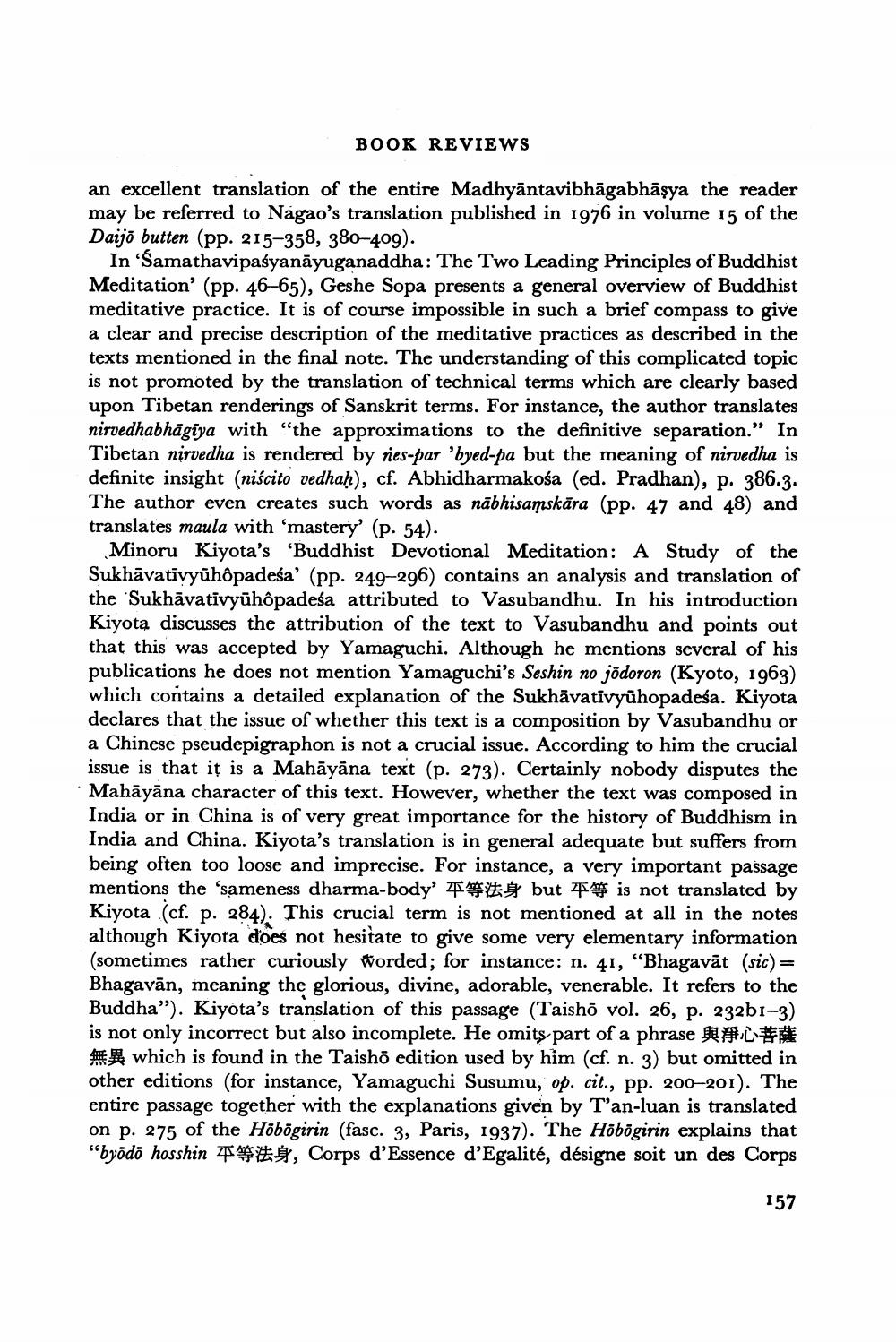________________
BOOK REVIEWS
an excellent translation of the entire Madhyāntavibhāgabhāşya the reader may be referred to Nagao's translation published in 1976 in volume 15 of the Daijo butten (pp. 215-358, 380-409).
In 'Samathavipaśyanāyuganaddha: The Two Leading Principles of Buddhist Meditation' (pp. 46-65), Geshe Sopa presents a general overview of Buddhist meditative practice. It is of course impossible in such a brief compass to give a clear and precise description of the meditative practices as described in the texts mentioned in the final note. The understanding of this complicated topic is not promoted by the translation of technical terms which are clearly based upon Tibetan renderings of Sanskrit terms. For instance, the author translates nirvedhabhāgiya with "the approximations to the definitive separation." In Tibetan nirvedha is rendered by ries-par 'byed-pa but the meaning of nirvedha is definite insight (niścito vedhaḥ), cf. Abhidharmakośa (ed. Pradhan), p. 386.3. The author even creates such words as nābhisamskāra (pp. 47 and 48) and translates maula with 'mastery' (p. 54).
Minoru Kiyota's 'Buddhist Devotional Meditation: A Study of the Sukhāvativyūhôpadeśa' (pp. 249-296) contains an analysis and translation of the Sukhāvativyūhôpadeśa attributed to Vasubandhu. In his introduction Kiyota discusses the attribution of the text to Vasubandhu and points out that this was accepted by Yamaguchi. Although he mentions several of his publications he does not mention Yamaguchi's Seshin no jõdoron (Kyoto, 1963) which contains a detailed explanation of the Sukhāvativyūhopadeśa. Kiyota declares that the issue of whether this text is a composition by Vasubandhu or a Chinese pseudepigraphon is not a crucial issue. According to him the crucial issue is that it is a Mahāyāna text (p. 273). Certainly nobody disputes the · Mahāyāna character of this text. However, whether the text was composed in India or in China is of very great importance for the history of Buddhism in India and China. Kiyota's translation is in general adequate but suffers from being often too loose and imprecise. For instance, a very important passage mentions the 'sameness dharma-body'
but is not translated by Kiyota (cf. p. 284): This crucial term is not mentioned at all in the notes although Kiyota does not hesitate to give some very elementary information (sometimes rather curiously Worded; for instance: n. 41, “Bhagavāt (sic) = Bhagavān, meaning the glorious, divine, adorable, venerable. It refers to the Buddha”). Kiyota's translation of this passage (Taisho vol. 26, p. 232b1-3) is not only incorrect but also incomplete. He omits part of a phrase AC
which is found in the Taisho edition used by him (cf. n. 3) but omitted in other editions (for instance, Yamaguchi Susumu, op. cit., pp. 200-201). The entire passage together with the explanations given by T'an-luan is translated on p. 275 of the Hõbögirin (fasc. 3, Paris, 1937). The Hõbögirin explains that "byōdō hosshin 4 , Corps d'Essence d'Egalité, désigne soit un des Corps
157




